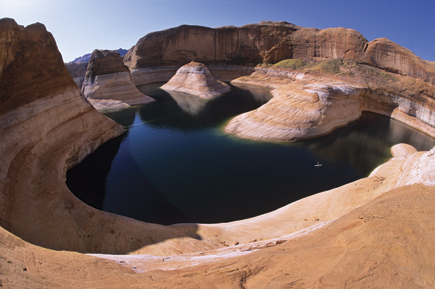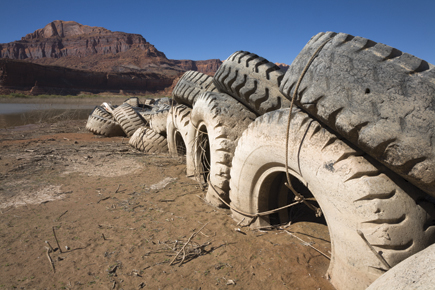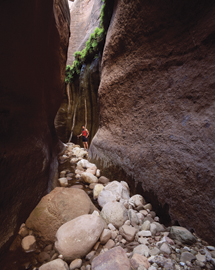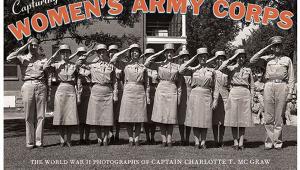New Found Land; James Kay Documents The Return Of Glen Canyon Page 2
“Some of the canyons were relatively easy,” Jim says in a tone that suggests they were not. “Others were extremely remote. This is some of the most difficult, remote terrain on the planet. I had maps and would plan a route and decide what set of canyons I’d try to hit on a certain day. And then there’d be canyons turning off the main canyon every couple of miles…it was an amazing adventure.”
 |
|
|
Jim used three different cameras over the course of the project. He began with Nikon film gear, switched to a Pentax 67 for the majority of the landscape work—“the beauty shots”—and finished up with images from a Canon D-SLR. For the deep canyons, where the light was really contrasty and tricky, he used a spot meter for his exposures; out in the open he’d wing it with manual settings based on his long experience as a nature photographer. Wide-angle lenses played a big part in the effort: “On the 67 I had a 45mm most of the time,” he says. “It’s the equivalent of a 24mm in 35mm format.”
 |
|
|
The results are stunning images of a land returning to life and an awareness that despite man’s efforts, nature will often have the last word. But Resurrection is more than a record or a document—it’s a call for a new look at the way we live and how we use our diminishing resources.
 |
|
|
“In presentations we’ve given on the book, we’ve found that people are amazed that Glen Canyon came back,” Jim says. “They thought it was gone, dead, destroyed. And when they realize how quickly it’s started to restore itself to its former beauty, there’s the thought that maybe there’s a chance to fix the mistakes we made in the past, that it’s still not too late.”
You can see a gallery of Jim’s images at his website, www.jameskay.com. Visit www.jameskay.com/glencanyon for information about the book and its companion DVD.
- Log in or register to post comments

















































